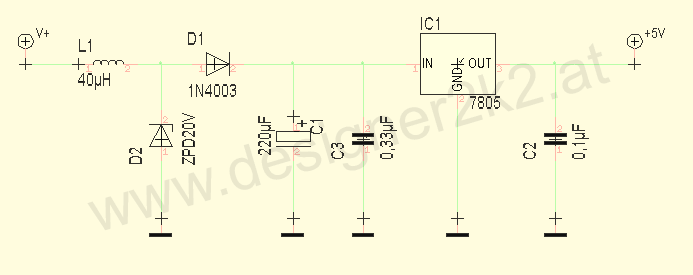I am trying to build an arduino for my car to monitor some temp gauges, I need to get a clean voltage to the arduino and I have read a ton of different opinions. I was looking for some suggestions to get a clean 5V to the unit, this is a schematic that I found, are all of these components necessary? what is the purpose of the inductor and where are there 2 caps before the input of IC1?



Comment